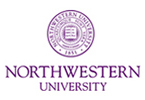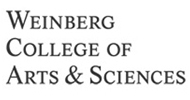Team:Northwestern/Project/MathModel
From 2011.igem.org
PROJECT

RESULTS

CONSIDERATIONS

ABOUT US

NOTEBOOK

ATTRIBUTIONS


In our mathematical model we developed a system to characterize each of the two (las and rhl) plasmids. Simple detection is fairly straightforward. The engineered E. coli cells will express R-proteins (LasR or RhlR) constitutively. In the presence of PAI-1 and PAI-2, the R-proteins and the autoinducers will dimerize, which results in the induction of the induced promoter. Upon induction the induced promoters will express the reporter genes.
Our modeling approach describes the time evolution of concentrations of the relevant molecules as a system of first-order, nonlinear, ordinary differential equations. The associated variable and constants relevant to the general model are detailed in the table below. Additionally, the [] indicate concentrations.

We have developed two distinct biosensor systems which can function independently of one another. They are the Las and Rhl sensor systems. However, each system can be modeled using a similar approach, implementing a series differential equations. The general model accounts for the production of the R-protein from the plasmid, diffusion of the autoinducer into the cell, and finally, the transcriptional activation and production of fluorescent reporter protein. A graphical representation of the biochemical system can be found below in Figure 1.
 |
The R-protein/autoinducer dimer (D) can act as a transcription factor and bind to the induced promoter (IP), which induces the expression of the reporter at the rate r6 and degrades back to D and IP at the rate r13. Transcription and translation are described as a single step that follows a hill function, yielding:

The R-protein is produced by the translation of the R-protein mRNA (RmRNA) at a rate r5 and degrades at the rate r10. Moreover, the R-protein can forward dimerize at the rate r1 and reverse at rate r2. RmRNA is transcribed at the rate r3 by the constitutive promoter (CP) and degrades at the rate r4,

Upon the binding of D to IP at the rate r6, GFP mRNA (GmRNA) is transcribed. GmRNA degrades at the rate r9 and is translated to GFP at the rate r7. GFP degrades at the rate r8,

The autoinducer PAI-1 diffuses passively into the cell as a result of the concentration gradient, cell volume, surface area and membrane thickness which establish the equation mass transfer1. The intracellular (A1i) and extracellular (A1e) PAI-1 degrade at the rate r11 and r12,

The general model will now be applied to the Las and Rhl systems in the figure below. The increasing rate numbers are just indicative of independent reactions and rate constants for each reaction.
 |
Therefore, as we have shown above, our model can be applied with great ease to both the Las and Rhl systems. Hence it can be reused to model both of our (constructed plasmid) systems. However, in each for each system the rate constants will need to be updated, and the generic variables will represent a different set of biochemical-species.
 "
"




